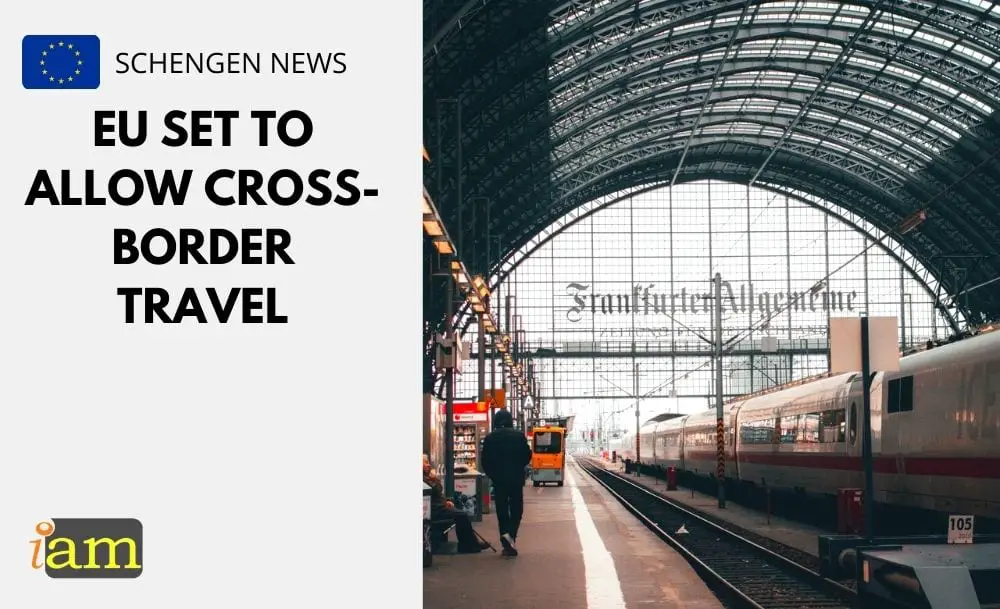EU Set to Allow Cross-Border Travel

Travellers within the EU bloc are undoubtedly excited at the news that several European countries are easing their restrictions and opening up their borders to more travellers.
The EU has approved a modified European Commission proposal to allow people who have been fully vaccinated against COVID-19 to travel freely from one EU country to another without having to test or quarantine.
Restrictions for unvaccinated travellers would be based on the COVID-19 situation in the country they are visiting from.
Cross-Border Travel

Europe has been the top destination for many people and with tourists being blocked from travelling for so long, those who visit Europe are likely to want to go to more than one destination. However, the fact that different EU countries have their own border policies meant that this is a cause for concern to travellers, especially for last-minute border closures.
Last week, countries from the EU– like France, Switzerland, Portugal, and Greece, among others– agreed to ease their travel restrictions over summer and are set to broaden the number of EU countries that it is safe to travel from, making it possible for fully vaccinated tourists to avoid tests or quarantines should they wish to visit more than one country in the EU.
Travellers must be fully vaccinated, and their final dose was done 14 days prior to arrival in the EU, in order to be able to benefit from the new rule change.\
Whilst unvaccinated travellers may have a bit more difficulty entering the bloc, it is still possible for those from certain countries. Those from EU and Schengen countries can enter, as can travellers from safe third countries, provided they arrive with a recent negative PCR test or proof of recovery from the virus.
Also for unvaccinated travellers, there is still the possibility of being able to travel from one EU country to another with relative ease, depending on the COVID-19 situation in the location that the traveller is coming from. This will be assessed according to the EU’s traffic light system that determines the safety of different EU regions.
EU’s Traffic Light System
As the EU's doors reopen to the outside world, a traffic light system will be used to highlight the safety of or threat level in various regions.
Here are the criteria per color category.
Green: 14-day notification rate is lower than 25 cases per 100,000, test positivity rate below 4%
Orange: 14-day notification rate is lower than 50 cases per 100,000, test positivity rate is 4% or higher, or if the 14-day notification rate is between 25 and 150 cases per 100,000 and the test positivity rate is below 4%
Red: 14-day cumulative COVID-19 case notification rate ranges from 50 to 150 and the test positivity rate of tests for COVID-19 infection is 4% or more, or if the 14-day cumulative COVID-19 case notification rate is more than 150 but less than 500
Dark red: 14-day cumulative COVID-19 case notification rate is 500 or more
Grey: If there is insufficient information or if the testing rate is lower than 300 cases per 100,000
Travellers coming from a green zone should face no restrictions. However, those coming from orange and red zones may face testing or quarantine requirements, whilst travel from a dark red zone is strongly discouraged. Children above the age of 12 may need to be tested, but will only need to quarantine if an accompanying adult had to.
EU Digital COVID Certificate

Last week, the EU signed a regulation that effective on 1 July the Member States are obliged to start issuing the EU Digital COVID certificates within six weeks if they haven’t done so by then.
Twelve EU member countries have already begun using the system, which went live late last month, while another 16 have completed testing and are ready to implement it at any time.
The European Parliament has marked 1 July as the date upon which the certificate will need to be made available for travellers’ use in all member countries.
The EU Digital COVID Certificate is essentially a free mobile app that supplies on-demand either: digital proof of a person’s vaccination against COVID-19, recent negative test results or certification that they’ve previously been clinically diagnosed and recovered from the virus.
Currently, Europe is about halfway through its “warm-up” phase for the Digital COVID Certificate’s rollout. A dozen member nations are already using the pass:
- Austria
- Bulgaria
- Croatia
- Czechia
- Denmark
- Estonia
- Germany
- Greece
- Latvia
- Lithuania
- Poland
- Spain
Another 12 EU members, along with four non-EU countries that are part of the Schengen Area, have also finished with testing and are ready to launch the app:
- Belgium
- Cyprus
- France
- Iceland
- Ireland
- Italy
- Liechtenstein
- Luxembourg
- Netherlands
- Norway
- Portugal
- Romania
- Slovakia
- Slovenia
- Sweden
- Switzerland
Finland, Hungary, and Malta are currently lingering behind, still in the testing phase.
What are your plans for the summer? Talk to us in the comment section below.
Check out the deals we have found below and tell us your travel plans.
Check out the offers and discounts from:
And because of the pandemic, don’t forget to get your travel insurance, which will cover you for flight disruptions and pandemic related matters.
IaM can help with your visa application to the United States, the UK & other countries
If you need help with a US visa, a UK Visa, or visa to Europe, including help with appointment booking obligations, IaM can help. For more information and advice on US immigration, UK immigration law and US visa applications or if you need any help or assistance please, reach out to your Visa Coordinator at IaM.
Some of our posts include affiliate links. If you choose to purchase any of these products, we might get a small commission. For more information, check out our TOS.











